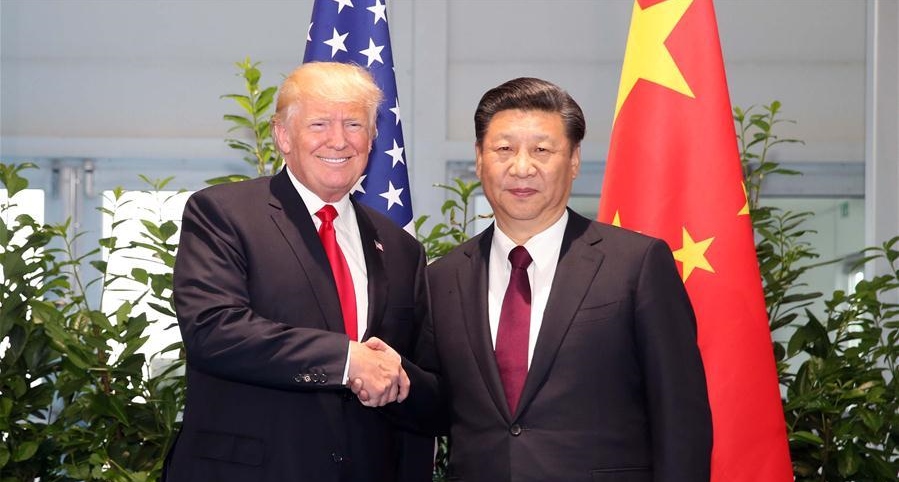US-China concessions
May 23, 2018 | Expert Insights

China has agreed to cut import tariffs for foreign car manufacturers to 10%. This development comes days after Chinese Vice-Premier Liu He and US Treasury Secretary Steve Mnuchin concluded “positive” and “productive” talks to end US-China trade differences.
In 2017, US shipped approximately $13 billion worth of vehicles and vehicle parts to China.
Background
Current US President Donald Trump has been a vocal critic of China. He blames the country for the loss of jobs within the US. He has often criticised the “very unfair and one-sided” trade relationship. In 2017, China’s trade surplus with the United States was $347 billion.
In recent months, experts have sounded alarm about an impending trade war between US and China. These fears solidified in March, when US President Donald Trump announced global import tariffs of 25% on steel, and China promised retaliation. Since then, tensions have escalated. The US has imposed tariffs worth over $150 billion; Beijing responded with $50 billion worth of tariffs. China has targeted US agriculture, and commentators have noted that tariffs could hurt US soybean exports. China is the largest export market for American soybean farmers, accounting for 56% of the $22 billion exports. Additionally, Chinese tariffs have targeted pork, wine, and some fruits and nuts, as well as chemical and transport goods.
Meanwhile, US has targeted Chinese technology. In April, Trump unveiled a list of Chinese imports that targeted sectors including robotics, information technology, communication technology and aerospace. Analysts noted that this list could target Beijing’s tech-focussed “Made in China 2025” policy. The US has complained to the WTO about protection of intellectual property. Washington’s “Section 301” investigation is currently inspecting alleged Chinese theft of US intellectual property. During trade talks in Beijing this May, US officials reportedly called for China to cut the trade deficit by $200 billion. The talks were led by Treasury Secretary Steve Mnuchin and Chinese Vice-Premier Liu He in Beijing, and were inconclusive.
In April, Washington slapped Chinese multinational telecommunications equipment and systems company, ZTE, with a seven-year ban on purchases of crucial American technology. The sanctions were a result of the company illegally shipping US technology to Iran. Read more on this here.
Analysis
China has agreed to cut its import duty on cars from 25% to 15%, as a concession to the US. Import duty on car parts will drop to 6%. This measure is the latest in a series of moves that have de-escalated trade tensions between the two nations. Shares of car manufacturers across the globe saw gains following the announcement.
Vice Premier Liu He and Steve Mnuchin recently concluded a second round of trade talks that ended in a truce. “We’re putting the trade war on hold,” Treasury Secretary Steven Mnuchin said after the meeting. “Right now, we have agreed to put the tariffs on hold while we execute the framework.” Liu told Chinese media that the talks were "positive, pragmatic, and productive" with some important consensuses reached. China has agreed to increase its imports of US goods and cut the trade deficit. “To meet the growing consumption needs of the Chinese people and the need for high-quality economic development, China will significantly increase purchases of United States goods and services,” a joint statement said.
There have been other positive developments this month, including President Trump softening his stance on sanction-hit ZTE, which is “reflective of the larger trade deal,” President Trump noted on Twitter. The two countries have reportedly agreed to a “broad outline” for a settlement that could end the ban on ZTE. According to some reports, US could drop the ban in return for an increase in agricultural purchases.
Meanwhile, China has approved a Qualcomm joint venture with state-owned Datang Telecom. Last week, Beijing said that it would end the anti-dumping duty it had imposed on US sorghum imports last month. China is reportedly considering opening up its financial and banking sectors as well. US Commerce Secretary Wilbur Ross is scheduled to visit Beijing next week.
Counterpoints
Trump himself seemed to temper statements made by other officials, stating that “there is no deal” yet. Mnuchin’s statements were also countered by US Trade Representative Robert Lighthizer, who said that the US "may use all of its legal tools to protect our technology through tariffs" and other means. Existing sanctions, including US tariffs on steel and Chinese tariffs on US products such as wine, still remain in effect.
Trump also noted that he had a "much bigger picture” in mind. "When I think of trade with China, I'm also thinking about what they're doing to help us with peace with North Korea. That's a very important element," he said. Trump hinted that Pyongyang’s recent return to an aggressive stance was the result of a meeting with President Xi Jinping.
Meanwhile, recent developments have been criticised by more hard-line policy makers. Critics have said that Trump is too focussed on the trade deficit, which is a short term solution, rather than long-term structural issues such as intellectual property and technology transfer.
Assessment
Our assessment is that recent events could indicate that with Beijing willing to make some concessions, trade tensions between US and China could lessen. However, as stated previously, concerns now remain regarding vague commitments made by both nations. We believe that a trade war between China and US would severely impact the global economy. We feel that recent months have exposed weaknesses on both sides, namely agricultural imports in the US and technology in China, leaving them both vulnerable to a future trade war.








Comments